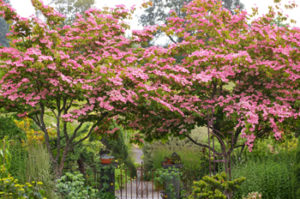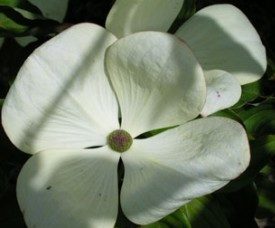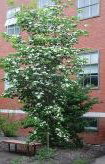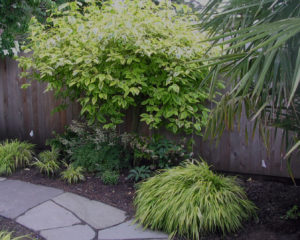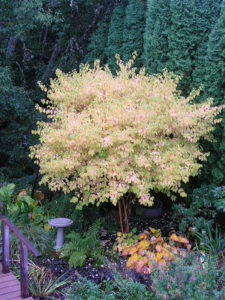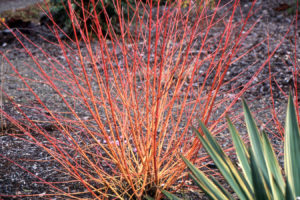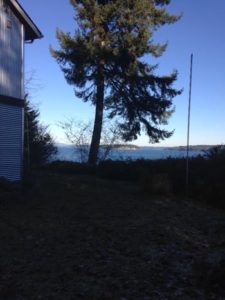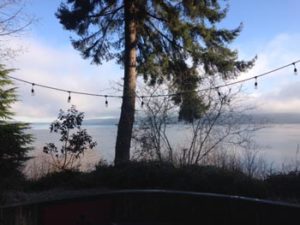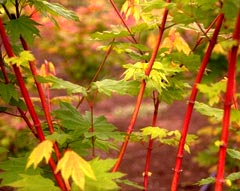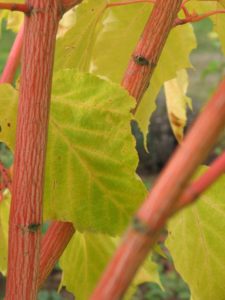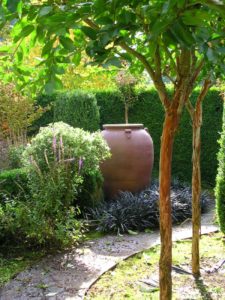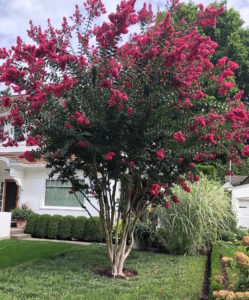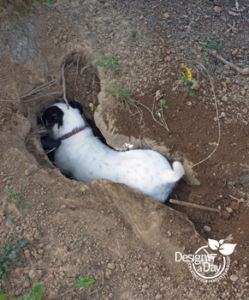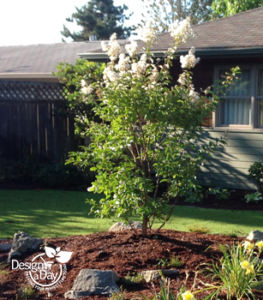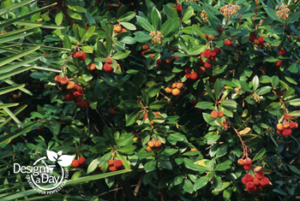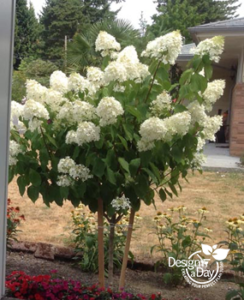Portland Landscape Designer Appreciates Diversity of Dogwood Trees
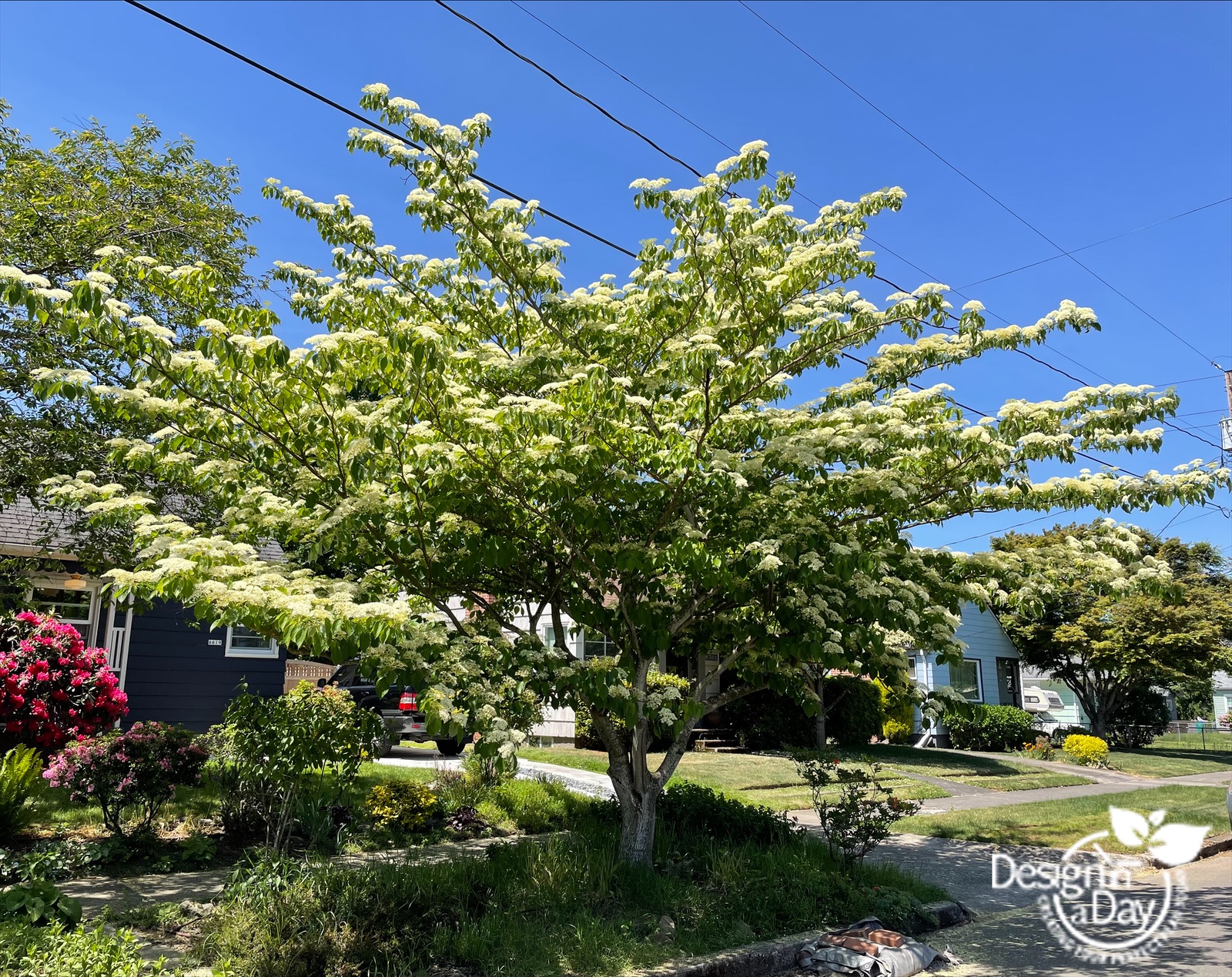
We recommend this 30′ wide tree for back yard or front yards not parking strips but here it is doing well in a parking strip in Overlook neighborhood of North Portland.
The diversity of dogwoods is well illustrated by these two trees: Cornus Kousa ‘Summer Gold’ and Cornus Controversa ‘June Snow’.
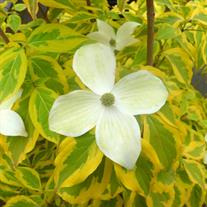
Bright cream flowers are backed by colorful leaf variegation of ‘Summer Gold’ dogwood. Photo courtesy of Heritage Seedlings
Colorful Summer Privacy Tree for Small Properties – Korean Dogwood ‘Summer Gold’
I love ‘Summer Gold’ partially because it’s so different from other dogwoods. ‘Summer Gold’ has narrow bright green and gold leaves and an upright narrow shape. The shape fits into urban settings much better than a round headed typical dogwood. The foliage will be a delight from spring into fall and this tree is a narrow vase shape perfect to put between your patio and the neighbors to achieve attractive privacy.
Traditional dogwoods (Cornus Florida and Cornus Kousa) have a wide oval solid green leaf and a 20′ or more wide round canopy. ‘Summer Gold’ was created by local Crispin Silva who is a delight. His curiosity and enthusiasm about plants has inspired many people in Portland including me. People here refer to his plants as “Crispin’s Creations”.
Elegant Branch Structure Cornus Controversa ‘June Snow’ Perfect Light Shade Tree

The flowers of ‘June Snow’ giant dogwood float above the graceful branches in Overlook neighborhood.
‘June Snow’ can be the single tree in your small city backyard because she has it all, grace, fall color, and an amazing floral display.
‘June Snow’ Dogwood matures at 30′ tall and spreads to 40′ wide. She has an arching shape and while bigger than typical dogwoods She has the most graceful silhouette even in winter. I use her to create light shade for medium to medium small landscapes. Too big for your typical row house back yard that is only 20′ wide, with another ten feet she can be the single beloved tree. She was introduced by J. Frank Schmidt Company also near Portland, Oregon.
Her branch structure is incredibly graceful and open and for a shade tree she is typically limbed up so it is easy to walk and play under this tree.
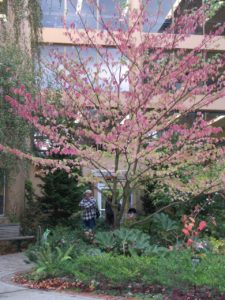
The fall color of ‘June Snow’ dogwood at Portland’s Legacy-Emanuel Hospital in The Children’s Garden.
When she flowers in June these flat topped clusters (which often exceed 6 inches) seem to float above the foliage. The fall color on ‘June Snow’ can compete with any dogwood. The color show starts with orange yellows and moves into intense purple red and purple as fall deepens. The fruit that develops from the flower clusters are quite tiny and not messy. The local birds will eat them.
Studying trees is what Portland landscape designers do so we can bring you the best choices. Ok and we are geeky about plants. Read more about dogwood trees….. Diversity of Dogwoods Part 1
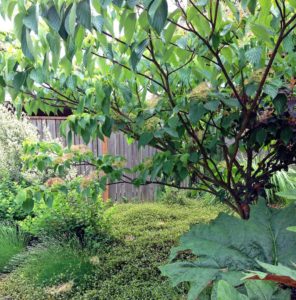
More beautiful branch structure of ‘June Snow’ Dogwood. This tree used for a border keeps its’ lower branches. (ANLD Garden Tour)

